Showing Spotlights 65 - 72 of 213 in category All (newest first):
 2019 marks the 150th anniversary of the Periodic Table, a unique tool, enabling scientist to predict the appearance and properties of matter on the Earth and in the the Universe. Different elements have played critical roles in different periods of human activities, with silicon (Si) being a key element, at present. However, the nanotechnology age has brought different elements into the limelight and transformed their roles in science and technology. A recent article discusses the most relevant elements from a nanotechnology perspective and their applications in nanomaterials.
2019 marks the 150th anniversary of the Periodic Table, a unique tool, enabling scientist to predict the appearance and properties of matter on the Earth and in the the Universe. Different elements have played critical roles in different periods of human activities, with silicon (Si) being a key element, at present. However, the nanotechnology age has brought different elements into the limelight and transformed their roles in science and technology. A recent article discusses the most relevant elements from a nanotechnology perspective and their applications in nanomaterials.
Oct 9th, 2019
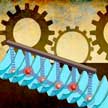 The precise mechanisms underlying friction at the nanoscale are still not completely understood. While gears, bearings, and liquid lubricants can reduce friction in the macroscopic world, the origins of micro-and nanoscale friction for small devices require other solutions. This primer explains the concept of friction, in nature and man-made systems, especially at the nanoscale. It then discusses a new class of 'smart' materials with the ability to modulate the friction of a surface.
The precise mechanisms underlying friction at the nanoscale are still not completely understood. While gears, bearings, and liquid lubricants can reduce friction in the macroscopic world, the origins of micro-and nanoscale friction for small devices require other solutions. This primer explains the concept of friction, in nature and man-made systems, especially at the nanoscale. It then discusses a new class of 'smart' materials with the ability to modulate the friction of a surface.
Aug 29th, 2019
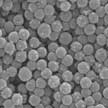 Nanoparticle characterization is a broad and complex discipline. Even today, researchers are still challenged by the task of determining the physicochemical properties of nanoparticles and exploring their structure-function relationships. A recent review article provides a set of guidelines to investigate and characterize the key parameters defining a nanoparticle sample, namely size, shape, surface charge, and porosity. It also provides recommendations of how the physicochemical parameters of nanoparticles should be investigated, and how to characterize these key properties in different environments according to the intended nanoparticle use.
Nanoparticle characterization is a broad and complex discipline. Even today, researchers are still challenged by the task of determining the physicochemical properties of nanoparticles and exploring their structure-function relationships. A recent review article provides a set of guidelines to investigate and characterize the key parameters defining a nanoparticle sample, namely size, shape, surface charge, and porosity. It also provides recommendations of how the physicochemical parameters of nanoparticles should be investigated, and how to characterize these key properties in different environments according to the intended nanoparticle use.
Jun 5th, 2019
 Superlubricity is a phenomenon where two surfaces slide over each other with barely any resistance (a state that is called near-zero friction). This is a very special case where friction almost vanishes between two surfaces. The difficulty of achieving superlubricity in mechanical systems is due to the very complex physical, chemical, and mechanical interactions that occur simultaneously at the sliding interfaces of these systems. Superlubricity is one of the most promising properties of functional nanomaterials for energy saving applications.
Superlubricity is a phenomenon where two surfaces slide over each other with barely any resistance (a state that is called near-zero friction). This is a very special case where friction almost vanishes between two surfaces. The difficulty of achieving superlubricity in mechanical systems is due to the very complex physical, chemical, and mechanical interactions that occur simultaneously at the sliding interfaces of these systems. Superlubricity is one of the most promising properties of functional nanomaterials for energy saving applications.
May 10th, 2019
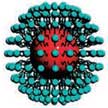 Whereas the evolutionary path of the atomic world has occurred over billions of years, the evolutionary path of the synthetic nanoparticle world has just begun. Man-made nanoparticle assemblies are beginning to revolutionize different fields including thermoelectronics, photoelectronics, catalysts, energy generation and storage, as well as medical diagnostics and therapeutics. Using the unconventional approach of comparing the atomic and nanoparticle worlds authors describe the development of nanoparticle research during the past several decades and provide pointers as to what the future might hold.
Whereas the evolutionary path of the atomic world has occurred over billions of years, the evolutionary path of the synthetic nanoparticle world has just begun. Man-made nanoparticle assemblies are beginning to revolutionize different fields including thermoelectronics, photoelectronics, catalysts, energy generation and storage, as well as medical diagnostics and therapeutics. Using the unconventional approach of comparing the atomic and nanoparticle worlds authors describe the development of nanoparticle research during the past several decades and provide pointers as to what the future might hold.
Jan 22nd, 2019
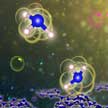 The ability to produce ammonia efficiently from air and water at room temperature and ambient pressure is of great interest in agriculture where it is used in fertilizers. In particular, the electrochemical reduction of nitrogen, in which the conversion of nitrogen to ammonia takes place under mild conditions, is highly relevant for the chemical industry that needs to cope with increasing demands for ammonia and at the same time is under pressure to reduce its ecological footprint. A new study describes novel single-atom catalysts as fascinating electrocatalysts for the application in nirtogen reduction.
The ability to produce ammonia efficiently from air and water at room temperature and ambient pressure is of great interest in agriculture where it is used in fertilizers. In particular, the electrochemical reduction of nitrogen, in which the conversion of nitrogen to ammonia takes place under mild conditions, is highly relevant for the chemical industry that needs to cope with increasing demands for ammonia and at the same time is under pressure to reduce its ecological footprint. A new study describes novel single-atom catalysts as fascinating electrocatalysts for the application in nirtogen reduction.
Nov 5th, 2018
 Though nanotechnology is portrayed as a fairly recent human invention, nature is actually full of nanoscopic architectures. They underpin the essential functions of a variety of life forms, from bacteria to berries, wasps to whales. In fact, tactful use of the principles of nanoscience can be traced to natural structures that are over 500m-years-old. Below are just five sources of inspiration that scientists could use to create the next generation of human technology.
Though nanotechnology is portrayed as a fairly recent human invention, nature is actually full of nanoscopic architectures. They underpin the essential functions of a variety of life forms, from bacteria to berries, wasps to whales. In fact, tactful use of the principles of nanoscience can be traced to natural structures that are over 500m-years-old. Below are just five sources of inspiration that scientists could use to create the next generation of human technology.
Aug 13th, 2018
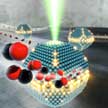 By combining advanced high-precision electron microscopy and computational methods, researchers have shed new light on the role of strain in nanoparticle catalysis. Catalytic metal nanoparticles supported on oxide substrates are used on a large scale in technological applications such as production of chemicals, abatement of air pollution and sustainable energy systems. The overall performance and durability of these systems is influenced by a range of factors, and every improvement could result in noticeable environmental and economic benefits.
By combining advanced high-precision electron microscopy and computational methods, researchers have shed new light on the role of strain in nanoparticle catalysis. Catalytic metal nanoparticles supported on oxide substrates are used on a large scale in technological applications such as production of chemicals, abatement of air pollution and sustainable energy systems. The overall performance and durability of these systems is influenced by a range of factors, and every improvement could result in noticeable environmental and economic benefits.
Jul 31st, 2018
 2019 marks the 150th anniversary of the Periodic Table, a unique tool, enabling scientist to predict the appearance and properties of matter on the Earth and in the the Universe. Different elements have played critical roles in different periods of human activities, with silicon (Si) being a key element, at present. However, the nanotechnology age has brought different elements into the limelight and transformed their roles in science and technology. A recent article discusses the most relevant elements from a nanotechnology perspective and their applications in nanomaterials.
2019 marks the 150th anniversary of the Periodic Table, a unique tool, enabling scientist to predict the appearance and properties of matter on the Earth and in the the Universe. Different elements have played critical roles in different periods of human activities, with silicon (Si) being a key element, at present. However, the nanotechnology age has brought different elements into the limelight and transformed their roles in science and technology. A recent article discusses the most relevant elements from a nanotechnology perspective and their applications in nanomaterials. 
 Subscribe to our Nanotechnology Spotlight feed
Subscribe to our Nanotechnology Spotlight feed





